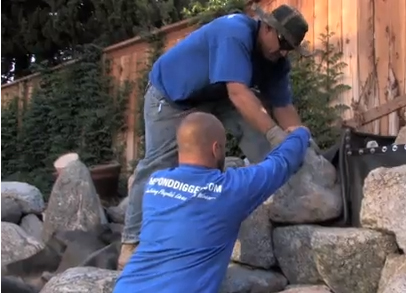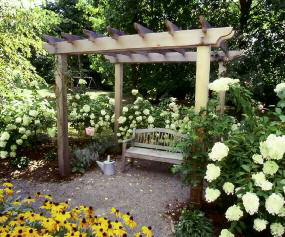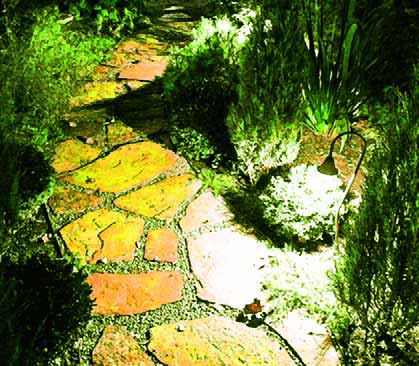placement
I’m generally a low-key guy, but I love almost everything about building waterfalls. I like discussing a site’s potential with my clients. I like going to the supply yard and selecting stone. And while I don’t mind letting others take the lead with the digging, I do like laying out shelves and setting the pond’s interior contours in ways that will maximize
The approach I took to this five-part series of articles on dry-stacked stone walls was a bit out of order – and I did it that way for a reason. If you’ll recall, in the last article I set aside any discussion of the drainage issues involved in stacking these walls. I did so both because it
We water and landscape professionals literally shape the outdoor environments in which we work – cutting grades, building walls, planting trees, installing pools, ponds and fountains and preparing patios, decks, planting beds and lighting systems. In designing these outdoor-living spaces, we spend the bulk of our time
Fire effects have grown tremendously in popularity in recent years, especially among swimming pool designers and builders who use them in developing various fire-on-water features. On one level, it seems that these professionals (and their clients) have noticed that systems that contain and control fire serve as wonderful complements to systems that contain and control water. On a grander scale, however, it’s apparent that, as watershape designers and builders have become more and more creative, fire features have risen in the estimation of those who want to give their clients something special – something few others have. At my company, Grand Effects of Irvine, Calif., we’ve focused on making it easy for watershapers, general contractors and landscape designers and architects to bring fire into the picture across a range of applications. To that end, we’ve developed an array of completely off-the-shelf systems, ready to install, and have done all of the engineering and testing required to build confidence into every product. In doing so, we’ve studied possible effects and developed
For a long time, we’ve focused on creating highly naturalistic ponds, cascades and streams that fit seamlessly into the wooded landscapes of North Carolina – projects of such quality that they stand up well in comparison to the vast numbers of natural watershapes we see just about every time we turn around. Until recently, the overwhelming majority of these watershapes were installed in backyards, away from public view, with many of them situated on these properties in ways that removed them from immediate access or turned them into remote destinations. That preference among our clients at Xstream Ponds (Cashiers, N.C.) seems to be changing. In the past few years, in fact, we’ve noticed a
Early in the history of garden design – dating back to the earliest days of civilization in Sumeria, Egypt and China – plants took center stage in garden spaces. Terraces and hanging gardens were built not for their innate ornamental qualities, but rather to display the plants they contained. Always, the prized plant was more important than its container. This preeminence of plant displays has been the rule rather than the exception throughout history, even
Growing as a designer is often a matter of seeing things from fresh perspectives. As one with roots in the pool industry, for example, I once thought first about water and about plants and softscape later (if at all). That bias isn't uncommon, of course: I know plenty of landscape architects and designers who think about plants first and only later consider water. It all has to do with our
Those of us who are designers and builders of full-scale outdoor environments (you know who you are) face a distinct challenge: In our work for our clients, we are expected to provide the outline and details for a huge range of project elements, from watershapes and patios to plantings and walkways and more. That list, at least so far as clients are concerned, also includes appropriate lighting, but that is not always something on which we focus. Indeed, lighting design is seen as a specialty even by those who tackle almost every other project feature - and there's no problem with that unless




















